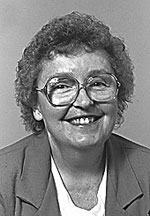Cornucopia / Cynthia Dewes
True or not, this Gospel seems like the real thing
 The minute details of living in the tiny country called the Vatican are fascinating, but unknown to most of us. There are canonical and political layers of authority, rankings of monsignori and cardinals, and even infighting among bureaucratic agencies. Who knew?
The minute details of living in the tiny country called the Vatican are fascinating, but unknown to most of us. There are canonical and political layers of authority, rankings of monsignori and cardinals, and even infighting among bureaucratic agencies. Who knew?
Well, there’s a novel out now which outlines some of these things in such gripping narrative, you can’t put it down. It’s called The Fifth Gospel by Ian Caldwell.
The story is around an Eastern (Catholic) Orthodox priest named Father Alex and his older brother, a Roman Catholic priest named Father Simon. They were born and raised in the Vatican because their father, also an Eastern Orthodox priest, served in an official capacity there as well.
Eastern Orthodox priests are allowed to marry until the time they are ordained. Thus, Father Alex has a wife, Mona, and a little boy named Peter, and the family is part of the wider Vatican community composed largely of celibates.
The novel is centered on the Shroud of Turin, which in the story is part of an exhibit in the Vatican Museum, mounted by the two priests’ friend Ugo. Ugo has been murdered at Castel Gandolfo, and then someone breaks into Alex’s apartment and leaves him a threatening phone call. Not only that, but Simon is the chief suspect and he has chosen not to talk about anything. Anything.
Alex adores Simon, who raised him after their parents died early. So he sets out to vindicate him and discover the motive and identity of the real murderer. He believes that there is something in the exhibit that led to Ugo’s death, since his research was crucial to its content. He’d uncovered an ancient document called Diatessaron, which he believed to be a Fifth Gospel.
Someone seems to believe that Alex knows the secrets of the exhibit because he worked on it with Ugo. There’s a subplot in the novel about Alex’s wife, Mona, who left him and their little son Peter two years ago. Their reunion and the great love they all exhibit for one another are moving. But it’s the main plot that grips the reader, with ups and downs galore.
We meet people who are suspect, only to find they are innocent, and fear ominous events which lead to nothing. Along the way, we’re entertained and enlightened about the workings of life in the Vatican. And as Alex searches for the truth, the characters and personalities of the main actors are revealed.
Pope John Paul II is the reigning prelate during the course of this story, and he plays a prominent role. He’s at the end of his life, feeble, immobile and almost mute, but there’s no doubt he’s the man in charge. His involvement in the secrets which Simon keeps mum is startling.
As we know, Pope John Paul II was interested in the reunion of the Orthodox and Catholic Churches, a theme which appears prominently in this book. The authenticity of the Shroud of Turin is also explored at length. The histories of both subjects, fact and fiction, are described in fascinating detail. Still another item I found interesting is the fact that the Roman Catholic Church includes not only Eastern Orthodox, but several Orthodox groups as well.
Naturally there are slips in the novel here and there: events that aren’t explained, or characters who dangle. But all in all, The Fifth Gospel is worth a look.
(Cynthia Dewes, a member of St. Paul the Apostle Parish in Greencastle, is a regular columnist for The Criterion.) †
 The minute details of living in the tiny country called the Vatican are fascinating, but unknown to most of us. There are canonical and political layers of authority, rankings of monsignori and cardinals, and even infighting among bureaucratic agencies. Who knew?
The minute details of living in the tiny country called the Vatican are fascinating, but unknown to most of us. There are canonical and political layers of authority, rankings of monsignori and cardinals, and even infighting among bureaucratic agencies. Who knew?